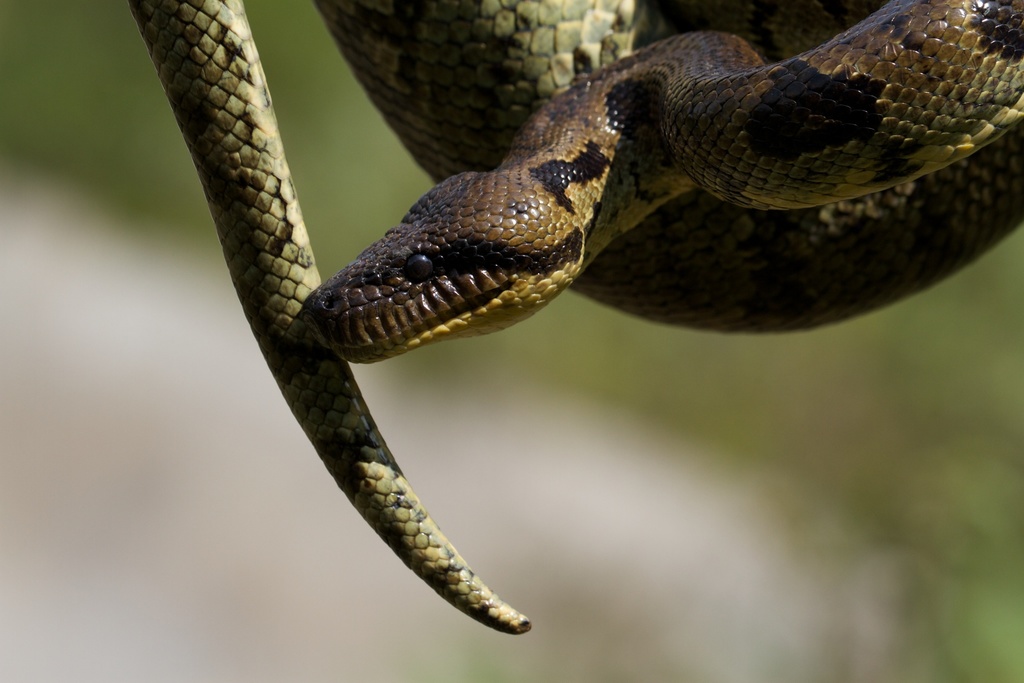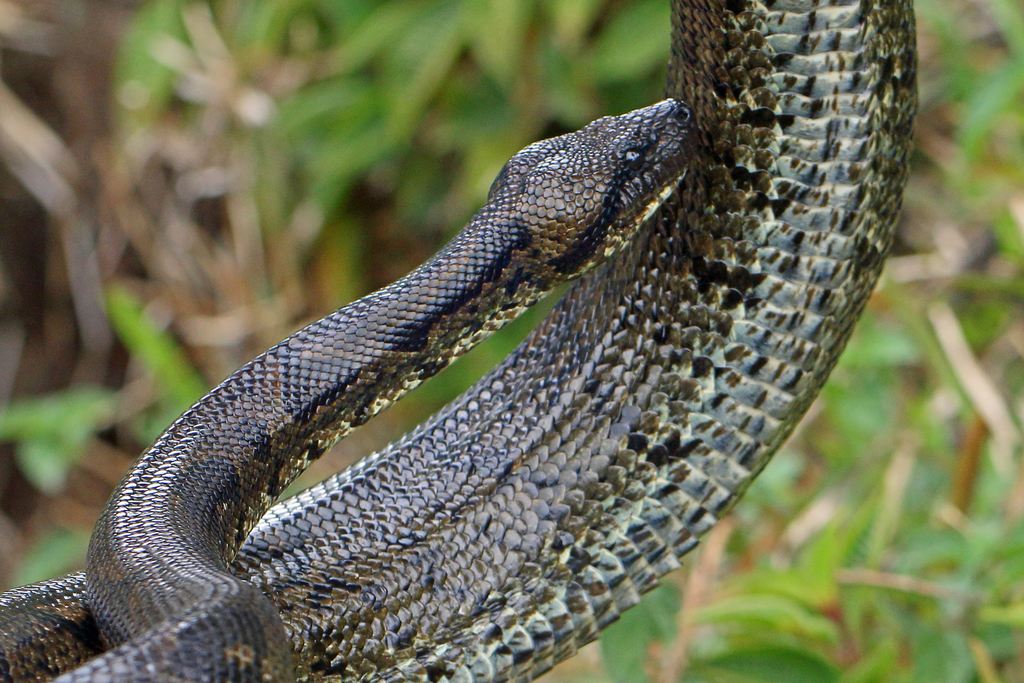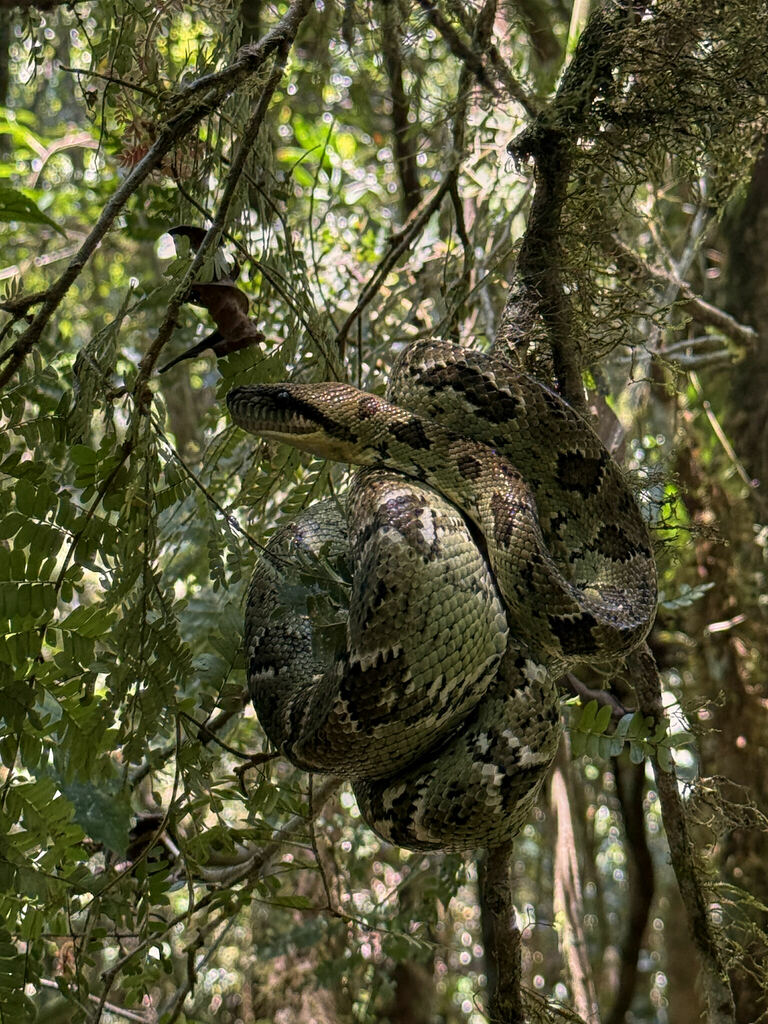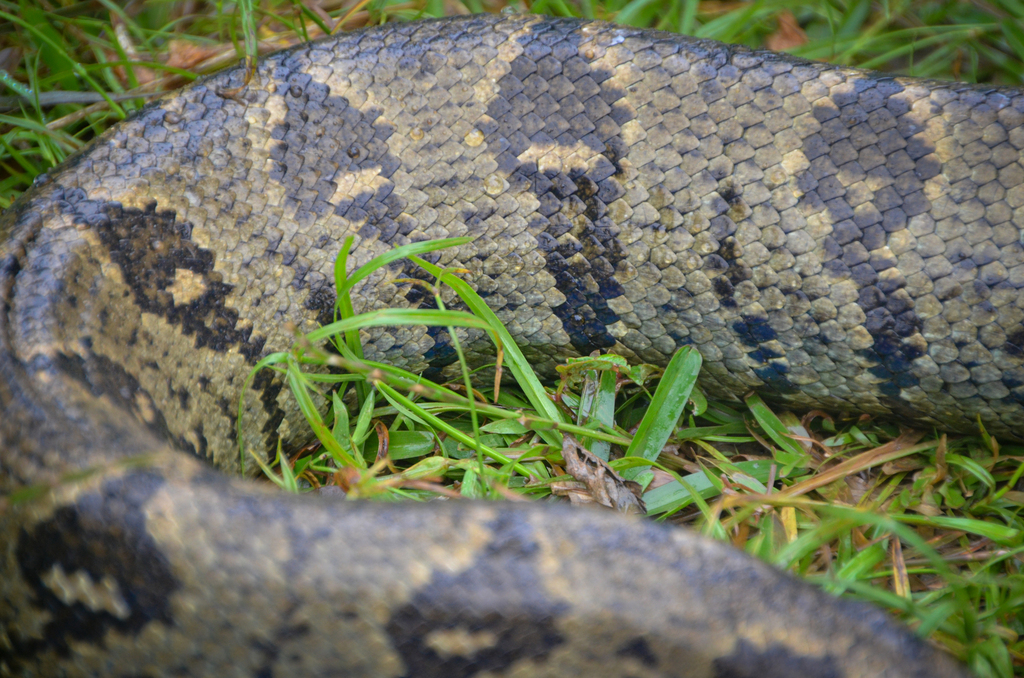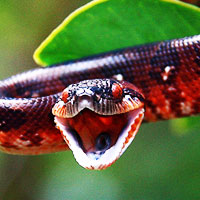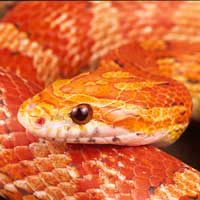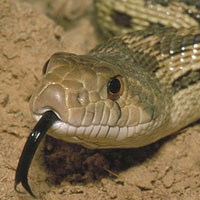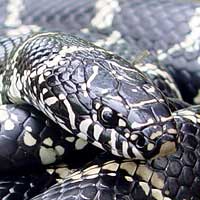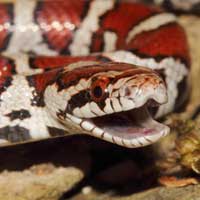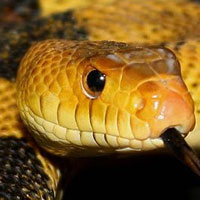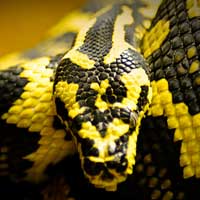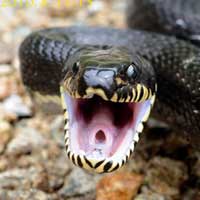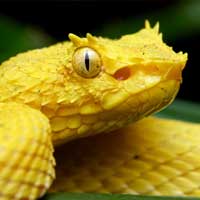Madagascar Tree Boa: A Stunning Arboreal Wonder
The Madagascar Tree Boa is scientifically named Sanzinia madagascariensis. It belongs to the Boidae family, which includes non-venomous constrictor snakes.
Scientific Name: Sanzinia madagascariensis
Snake Family: Boidae
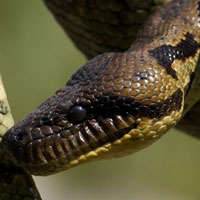
Get to Know the Madagascar Tree Boa—An Exotic Emerald of the Canopy
The Madagascar Tree Boa is one of the most visually striking snakes in the world, known for its vibrant coloration, slender build, and fully arboreal lifestyle. Scientifically named Sanzinia madagascariensis and part of the Boidae family, this non-venomous constrictor is native to Madagascar's humid forests and plays an important role in controlling local rodent and bird populations. With a reputation for calm behavior in captivity and a unique green or brown phase depending on age and sex, this snake has earned popularity among advanced reptile keepers and conservationists alike. This guide explores their natural environment, feeding needs, breeding behavior, and how to properly care for them in captivity.
Other Common Names for the Madagascar Tree Boa
- Malagasy Tree Boa
- Sanzinia Boa
- Green Madagascar Boa
- Emerald Madagascar Tree Boa
- Boa of Madagascar
The Natural Habitat of Madagascar Tree Boas: Forest Canopy Specialists
Madagascar Tree Boas are found throughout the eastern and northern rainforests of Madagascar, especially in dense, humid, and elevated environments. They are highly arboreal, meaning they spend most of their time off the ground, coiled along branches, vines, or inside hollow tree cavities. This vertical lifestyle sets them apart from many other boas, including their close island cousin, the Madagascar Ground Boa.
These boas thrive in warm, consistently moist environments where ambient humidity rarely drops below 70%. Rainforests with dense canopy cover provide the temperature gradients and visual cover they rely on for hunting and avoiding predators. Elevation ranges vary, but they are most commonly observed from sea level up to 1,200 meters in elevation.
In captivity, their natural habitat should be mimicked with vertical climbing space, abundant foliage, high humidity, and temperature control. A tall, well-ventilated enclosure with live plants or well-placed artificial foliage creates the best long-term setup.
| Habitat Factor | Ideal Conditions |
|---|---|
| Elevation | 0–1,200 meters |
| Temperature Range | 75–85°F (24–29°C) |
| Humidity | 70–90% |
| Habitat Type | Rainforest canopy, humid woodlands |
Madagascar Tree Boa Feeding Habits: What These Arboreal Hunters Eat
The Madagascar Tree Boa feeds primarily on birds, small mammals, and reptiles that it encounters in the canopy or lower understory. Its diet is opportunistic, and it uses its heat-sensing pits and excellent camouflage to ambush prey from branches. Unlike more terrestrial boas, these snakes are more likely to strike from above or alongside a perch rather than the ground.
In captivity, these boas adapt well to a diet of rodents, birds, and even reptile-specific feeder items when needed. Younger snakes often accept pinky mice or small birds like quail chicks, while adults typically consume small to medium rats or adult mice every 10–14 days.
- Hatchlings: Pinky mice or pinky quail every 5–7 days
- Juveniles: Hopper mice or small birds every 7–10 days
- Adults: Adult mice or small rats every 10–14 days
Feeding should always be done using tongs, especially in arboreal enclosures where the snake may strike from above. Because of their arboreal nature, prey may be more easily accepted if elevated or positioned on a branch-like platform.
Behavior and Temperament: What to Expect from a Madagascar Tree Boa
Madagascar Tree Boas are generally calm, slow-moving, and observant. They are solitary animals that rely on camouflage and ambush rather than aggression or speed. While some individuals may be nervous or defensive when young, captive-bred boas often tame down considerably with gentle, routine handling.
Unlike ground boas, these snakes tend to retreat vertically when startled and may coil tightly around branches. If they feel cornered, they may hiss or bluff strike, but actual bites are rare with acclimated animals. Their climbing abilities are exceptional, and owners should always provide safe vertical access and monitor during out-of-enclosure handling sessions.
- Activity Pattern: Nocturnal or crepuscular
- Defense Mechanism: Camouflage, hissing, coiling tightly
- Social Behavior: Solitary; does not require companionship
- Handling Tolerance: Moderate to high with consistent handling
Enrichment such as rotating perches, climbing plants, and hiding zones helps maintain healthy behavior. Stress can occur if enclosures lack vertical elements or are cleaned too frequently—balance consistency with interaction.
Health and Lifespan: Ensuring a Long, Healthy Life for Madagascar Tree Boas
When properly cared for, Madagascar Tree Boas can live between 20 and 30 years in captivity. Their arboreal nature makes them slightly more delicate than ground-dwelling snakes, but they are generally robust and resilient if kept under stable conditions. The most common health issues stem from humidity imbalances, inadequate heating, or stress from handling.
- Respiratory Infections: Often caused by low humidity or drafts
- Retained Shed: Due to dehydration or rough surfaces
- Mouth Rot (Stomatitis): Usually linked to enclosure cleanliness or injury
- Obesity: Prevented with proper feeding intervals and portion control
Routine health checks should include monitoring shed cycles, appetite, skin condition, and fecal output. Signs of illness include wheezing, irregular shedding, lethargy, or open-mouth breathing. New additions should be quarantined for at least 60–90 days to prevent cross-contamination.
| Health Metric | Ideal Range |
|---|---|
| Lifespan | 20–30 years |
| Optimal Humidity | 70–90% |
| Basking Spot | 88–90°F (31–32°C) |
| Resting Temp | 75–80°F (24–27°C) |
Reproduction of Madagascar Tree Boas: From Courtship to Live Birth
Madagascar Tree Boas are ovoviviparous, meaning they give birth to live young rather than laying eggs. Mating typically occurs during the cooler, drier months, with gestation lasting between 120 and 150 days. Courtship behavior includes tongue flicking, tail wrapping, and close body contact initiated by the male.
Females can give birth to between 6 and 20 neonates, which are immediately independent and capable of feeding within their first two weeks. The young are typically born with brighter coloration that becomes more subdued with age, and males are often smaller and more slender than females.
- Breeding Age: 3–4 years for females; 2–3 years for males
- Gestation Period: 120–150 days
- Litter Size: 6–20 neonates
- Neonate Size: 12–18 inches
Captive breeding requires temperature cycling and careful observation of post-ovulation behavior. Pregnant females may fast during gestation and should be provided with elevated hides and minimal disturbance. After birth, young should be housed individually to monitor feeding and development.
Handling and Long-Term Care Tips for Madagascar Tree Boas
While not a beginner snake due to its specific humidity and vertical space needs, the Madagascar Tree Boa is a rewarding species for intermediate to advanced keepers. Their docile nature and striking appearance make them a standout in any collection when provided the correct care.
Handling should be calm, confident, and infrequent during periods of stress or shedding. Always support the snake’s body fully, including the tail and midsection, and avoid sudden movements or grabbing from above, which can trigger a defensive response.
- Enclosure: Minimum 36”H x 24”W x 24”D for adults
- Substrate: Coconut fiber, cypress mulch, or bioactive soil mix
- Water: Large dish for soaking and humidity regulation
- Handling Frequency: 1–2 times per week, depending on individual tolerance
- Lighting: 12-hour cycle with UVB optional but beneficial
When provided with proper lighting, heating, hydration, and habitat enrichment, Madagascar Tree Boas thrive in captivity and may even reproduce successfully. Their calm demeanor, exotic appeal, and long lifespan make them a favorite among experienced herpetoculturists worldwide.
Other Snakes In This Species
 Argentine Boa
Argentine Boa Calabar Burrowing Boa
Calabar Burrowing Boa Colombian Rainbow Boa
Colombian Rainbow Boa Common Boa
Common Boa Cooks Tree Boa
Cooks Tree Boa Cuban Boa
Cuban Boa Desert Rosy Boa
Desert Rosy Boa Desert Sand Boa
Desert Sand Boa Dumeril Boa
Dumeril Boa Egyptian Sand Boa
Egyptian Sand Boa Emerald Tree Boa
Emerald Tree Boa Haitian Boa
Haitian Boa Hog Island Boa
Hog Island Boa Madagascar Ground Boa
Madagascar Ground Boa Madagascar Tree Boa
Madagascar Tree Boa Pacific Boa
Pacific Boa Red Sand Boa
Red Sand Boa Rough-scaled Sand Boa
Rough-scaled Sand Boa Rubber Boa
Rubber Boa True Red Tail Boa
True Red Tail Boa Western Rainbow Boa
Western Rainbow Boa
